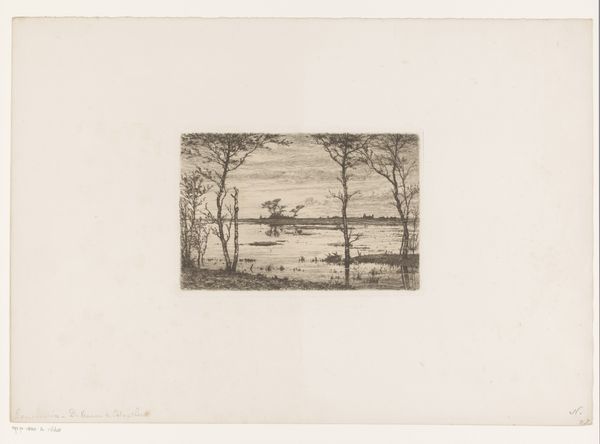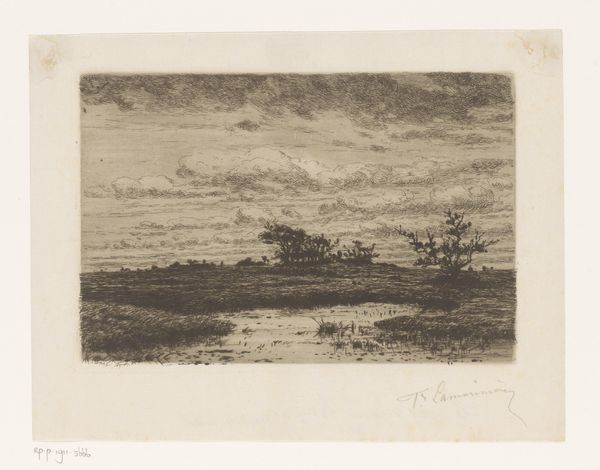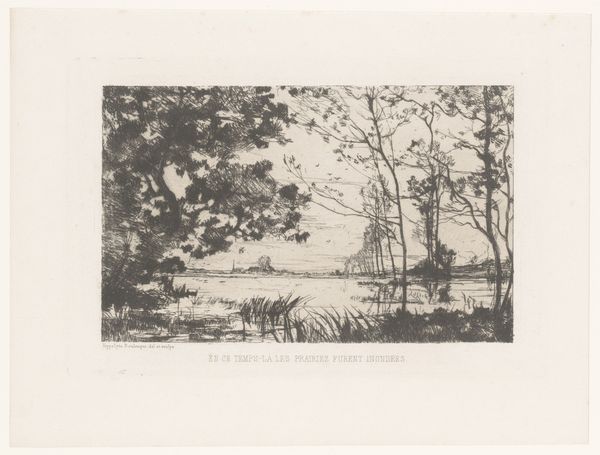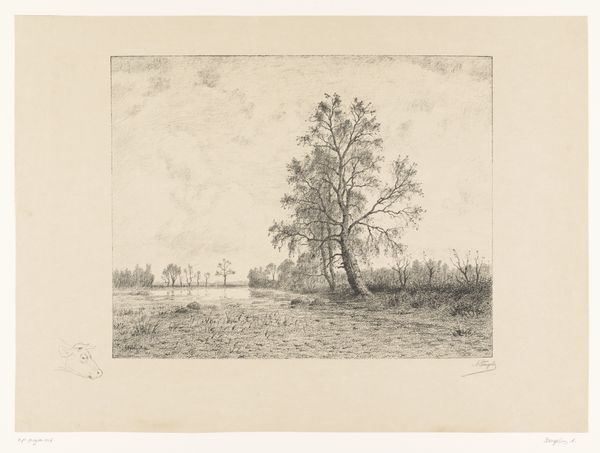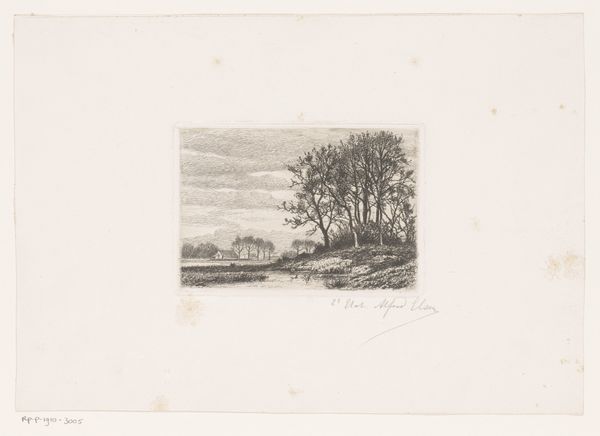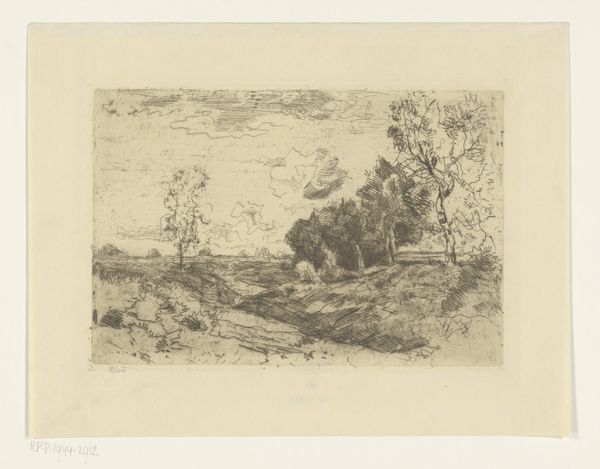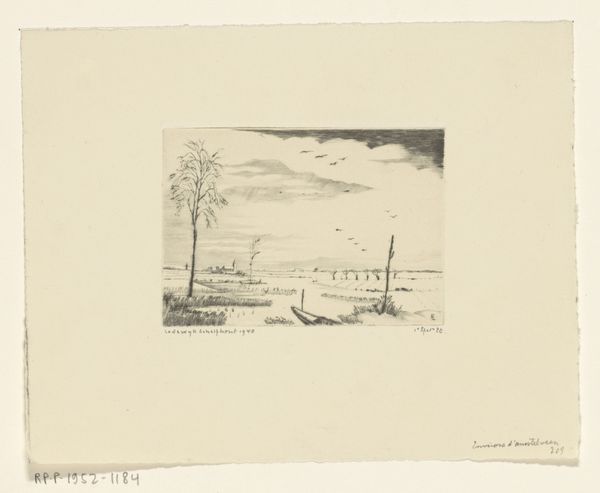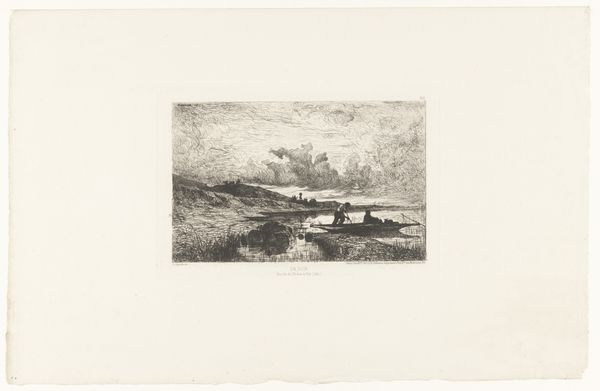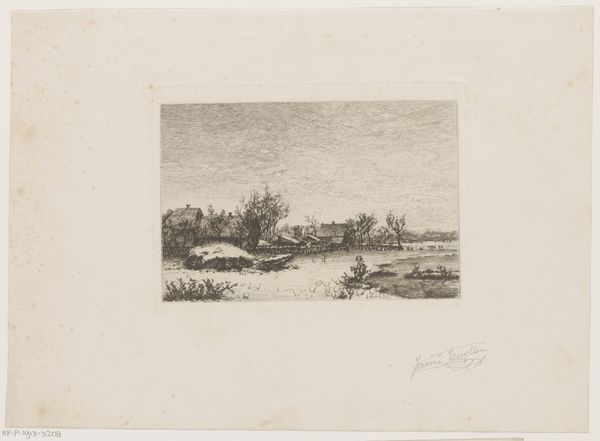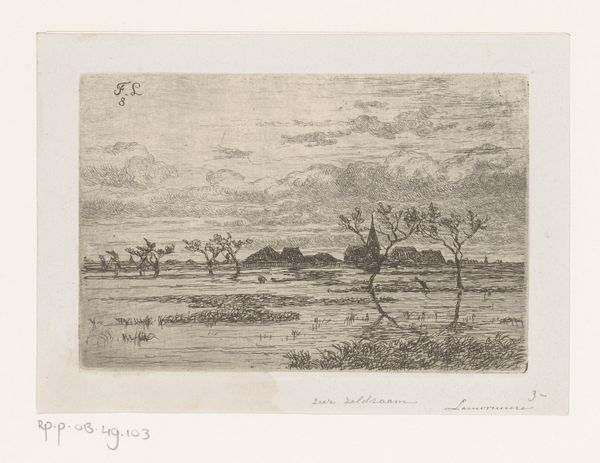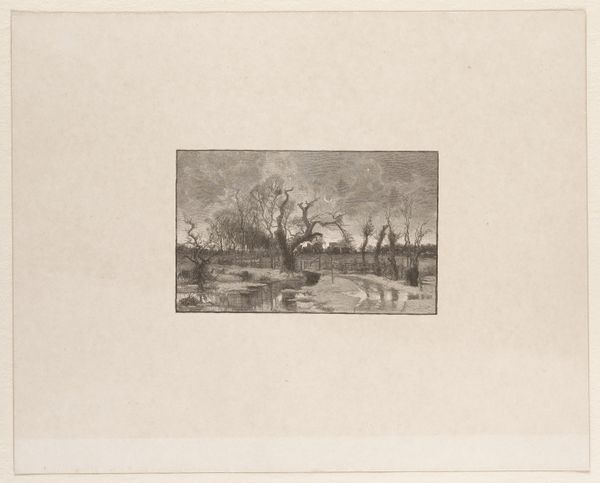
drawing, etching, paper
#
drawing
#
etching
#
landscape
#
paper
#
realism
Dimensions: height 159 mm, width 231 mm
Copyright: Rijks Museum: Open Domain
Editor: We’re looking at “Landschap met ossenwagen,” or "Landscape with Ox Cart," an etching by Theodoor Verstraete, around 1880. It’s a small piece, mostly grays and blacks on paper. I find it stark, maybe even a bit desolate. What strikes you most about it? Curator: Immediately, the socio-political context of late 19th-century agrarian life comes to mind. The work presents a Realist view, seemingly devoid of romantic idealizations. I wonder about Verstraete’s intent – was he aiming to portray the harsh realities of rural labor, or was he engaging with a larger artistic discourse surrounding representations of the working class? Note also the institutional framing: how did landscapes depicting labor enter the Rijksmuseum, and what did that signify for the perceived value of such scenes? Editor: That's fascinating! I hadn’t considered how its presence in a major museum might change its interpretation. The labor of the ox seems so solitary. Curator: Precisely! Consider the historical backdrop. The late 19th century witnessed increasing industrialization, yet a significant portion of the population remained tied to agricultural labor. Did the art market and institutions acknowledge this reality? Furthermore, I’d explore how Verstraete's landscapes contrast with the pastoral scenes often favored by the establishment. Are we seeing a form of social commentary, subtly critiquing the romanticism of the era? Editor: It definitely feels different from the idealized landscapes you often see. The sparse detail adds to that. Curator: And what of the implied audience? Who was consuming these images? How were they interpreting this visual representation of rural life, and how might those interpretations have reinforced or challenged existing social hierarchies? These are important questions when analyzing the political implications of a seemingly simple landscape. Editor: I never thought a landscape could have so much to say about social classes. Thanks for that perspective! Curator: Art is always saying something, directly or indirectly. Understanding the historical and social currents allows us to read it more deeply.
Comments
No comments
Be the first to comment and join the conversation on the ultimate creative platform.
